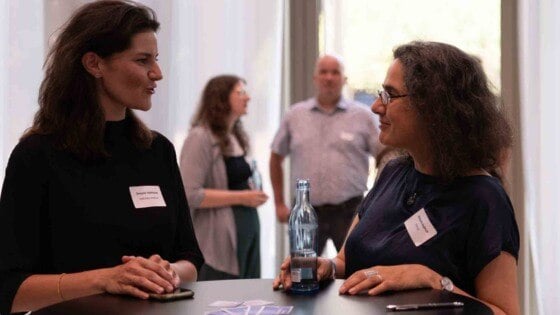A cap table- short name for “capitalization table”- is a spreadsheet with an overview of who owns a portion of equity of a company and how this equity is distributed among shareholders. When entrepreneurs are looking for financing rounds, the cap table is one of the main files that investors will check to assess whether the venture has a healthy distribution of equity or not. Generally, investors prefer cap tables where all or at least the vast majority of shareholders will contribute to value creation in the future. In some cases, entrepreneurs with appealing and promising business ideas miss funding opportunities due to the so-called broken cap tables. This refers to an inadequate distribution of equity among shareholders or inacceptable terms and conditions, which generates misalignment of interests or interferes with an efficient business management. As a result, the startup losses the ability to raise funds or requires going through a painful restructuring process.
Here, we outline 6 common pitfalls that could lead to a broken cap table 👇
1. Strong dilution of founders’ share in the company
Owning a relatively big portion of the venture is a very powerful incentive to promote founders to continuously create value for the company. As new investors contribute with capital in exchange of a portion of the business, the participation of founders gets more and more diluted. A common mistake arises when founders give away too many shares in early funding rounds, and therefore their stake in the company is reduced by a significant amount. This might occur when founders are not experienced enough to negotiate a better deal or not patient enough to wait for better conditions from other investors. Sometimes, inexperienced investors such as some business angels or strategic investors like corporates with only a few previous venture capital deals, don’t oversee the results of pretended “cheap” deals.
As a consequence, founders could end up with insufficient voting power on the company’s main decisions and will perceive less returns from the exit proceeds (e.g. from a trade sale or an IPO). So, why is this important? If founders don’t have enough motivation through equity to continue contributing to accelerate the business, it will send a negative signal to prospect investors about the long-term commitment that founders will have with the venture. In cases when the startup will be facing difficulties, founders with low equity stake will rather leave the company for a better remunerated job. As a rule of thumb, the founding team together should still own more than 50% of the start-up after funding series A. In early financing rounds, founders should not get diluted by more than 20% of the company, and in late stages dilution can be less than 10%.
/Guidelines%20to%20avoid%20Broken%20Cap%20Tables.png?width=600&name=Guidelines%20to%20avoid%20Broken%20Cap%20Tables.png) During SpinLab programs, founders learn online and offline from experts such as Florian Heinemann from Project A Ventures.
During SpinLab programs, founders learn online and offline from experts such as Florian Heinemann from Project A Ventures.
2. Misalignment between founders
Founding teams are as strong as their members. From an investor perspective, the motivation and skills of every team member count. Therefore, every team member should own a sufficient stake. Sometimes individual founders, e.g. the ideator, own much more shares (lets say more than 80%) than co-founders who were added to the team slightly later (lets say less than 20%) to reflect that one founder had the idea and started earlier. This is understandable from a historic perspective, but it doesn’t meet the expectations of investors who want to make sure that all founders are strongly motivated after their investment and even after future rounds. Therefore, all founders need enough shares to “survive” several rounds of dilution.3. Complex holding structures
Investors prefer easy structures. It is useful and accepted that founders hold their equity through holding companies. But it is hardly reasonable to put different founders under one umbrella within a combined holding company just to save some hundred Euros a year to build individual founder holdings. Investors hate this, because if founders keep their shares in a team holding, it is very hard to remove individual founding team members in later phases as for example vesting rules can’t be applied easily. In practice, it has been proven that this happens quite often. It is also problematic to add other persons, e.g. family members, to a founder’s holding or to chose strange locations for those holdings, e.g. Cayman Islands.
4. Slack Employee Stock Option Programs
Another negative factor is the so-called option pool shuffle. First, let’s clarify what an option pool is. Founders give stock option programs to employees to offset the low salary compensation that workers will be receiving in early stages of the startup due to a lack of cash. These Employee Stock Option Programs (ESOPs) are used as a form of non-cash compensation which provides key employees with an incentive to stay in the company, work diligently and create value for the business, in exchange for participating in the distribution of proceeds when the company is liquidated. To create the option pool, founders give part of their participation and therefore their share in the company is reduced. An option pool shuffle occurs when later stage investors demand to create an option pool (or to increase the percentage of equity allocated to an existing one) to allow future incentives to new incoming employees.
Let us understand how the option pool shuffle works through an example. Consider a company with two founders, one owning 60% and the other one 40%. Let’s assume founders decide to assign an extraordinary sum of 5% of the total equity to ESOP (this percentage typically ranges between 5% and 10%). Each founder will give up a certain percentage of their share to assign a 5% stake to the option pool, and as a result the participation of founder 1 will be diluted to 57% and to 38% for founder 2. In the cap table, the fully diluted shares column reflects the reduction of the shareholders’ participation, which will therefore determine the amount of profits to be distributed to each founder when the company is sold.
/Borken%20Cap%20Tables.png?width=644&name=Borken%20Cap%20Tables.png)
Given that option pools are considered crucial to include in cap tables, but at the same time strongly reduce the stake of shareholders, founders should pay special attention to prevent having a low amount of equity in early stages so that they could offer pool options without ending up with a relatively reduced stake and therefore reduced motivation in the company.
Founders need to treat ESOP shares as a scarce resource and should not allocate the full amount immediately to first employees. It is also crucial to implement vesting rules in ESOP programs, so that employees who leave early stay with a minimal share or even nothing. As a general rule of thumb investors might require having 3-5% free ESOP-shares after an investment to hire new highly motivated key employees or expand the management team. At the same time, in early rounds the ESOP pool should not be significantly above 10%
5. Having blocking minorities
When you found a company and decide to share participation among investors, you should consider not only the profit-sharing consequences but also the voting rights which are tied to the amount of shares assigned to each investor. A German GmbH (limited liability holding) classifies a specific type of participation as a Blocking Minority when a shareholder holds between 25.1% and 49.9% of a company, enabling him/her to prevent or block important decisions in shareholder’s meetings. According to the GmbH regulation, relevant decisions in the company such as changes in strategy, merges, and amendments to statutes, should be submitted to vote among shareholders and require the majority of votes to be accepted (> 75%). As a result, having shareholders with more than 25% of participation (a blocking minority) could have a big impact on the company if proposed resolutions are not aligned with the blocking minority’s interests.
Another important aspect to consider about blocking minorities is the impact on the company’s status as a SME (Small and medium-sized enterprise) and therefore in the public funding support intended for this type of companies. To be classified as a SME, no external party should own more than 25% of the company. However, certain types of investors are excluded from this rule and are allowed to own more than 25% without impacting its SME status. These exemptions include investors such as public investment corporation, venture capital firms, business angels, non-profit research institutes and universities.
6. To much dead equity
Be aware that prospect investors will be carefully reviewing your cap table not only to assess the allocation of equity but also to verify who are your shareholders and to what extent are they contributing to the venture’s future value creation. When raising funds, it is important to pay close attention to the contribution that your shareholders will bring not only in terms of money but in terms of competences and commitment to the venture. It then becomes problematic when you have the so-called dead equity in your cap table, which refers to shares given away to people who are not active in the business and are not adding value to the company anymore (or never did). Big portions of dead equity in you cap table turn into a negative signaling to investors, as a small percentage of the stake is left for people who are or will be committed to increase the company’s value. Dead equity usually includes founders who left the company, founders not fully committed with the business, family members, previous academic partners or consultants who worked against shares in the past.
In this context, a broken cap table could be tackled by avoiding dead equity on your venture. However, you could also seek to create a positive signaling by partnering with the correct investors for your business. Executing a careful due diligence on your investors is important if you want to ensure a healthy development and performance of the business. It could be helpful to partner with investors who have knowledge or experience in topics related to the venture, so you could receive advice and guidance about the industry.
Conclusion
A broken cap table increases the probability of your venture to be subject to a painful restructuring process. Before jumping into the funding rounds, it is important to perform a complete and conscious research about your prospect investors. A very important aspect that you should also consider when looking for investors, is their capacity and willingness to provide follow up capital in future funding rounds. It is considered a negative signaling when investors that have been continuously injecting money to your startup, decide to stop its financial support. Therefore, it should be an important question to ask your prospect investors whether they will be capable to continue with their funding support on the next financing rounds.
Educate yourself to assess the most adequate ownership distribution, anticipate the effects of dilution and avoid miss alignment of incentives. Keep in mind to assign equity in the most efficient way to provide key shareholders with the proper incentives to deliver continuous value creation to the company. There are some methods to clean broken cap tables. The most expensive and complicated one is to re-establish the company legally. Other options might be secondaries or changing term details (e.g. defining who contributes to ESOP programs and which shareholders don’t). In rare cases investors even transfer own shares back to founders to make sure they are highly motivated. If you want to learn more about cap tables, venture capital-related topics or many other tips and tricks as well as failures to avoid, join one of the SpinLab programs.
//Article written in collaboration with Andrea Escorcia MSc student from HHL Leipzig Graduate School of Management.






/RootCamp_Logo-Ecosystem.png?width=200&name=RootCamp_Logo-Ecosystem.png)
/Bitroad_Logo-Ecosystem.png?width=200&name=Bitroad_Logo-Ecosystem.png)






/White%20Versions/stadt_leipzig_white.png?width=130&name=stadt_leipzig_white.png)
/lfca_white.png?width=119&name=lfca_white.png)
/bmwi-white-engl-2022.png?width=573&name=bmwi-white-engl-2022.png)
/White%20Versions/sachsen_signet_white.png?width=90&height=362&name=sachsen_signet_white.png)